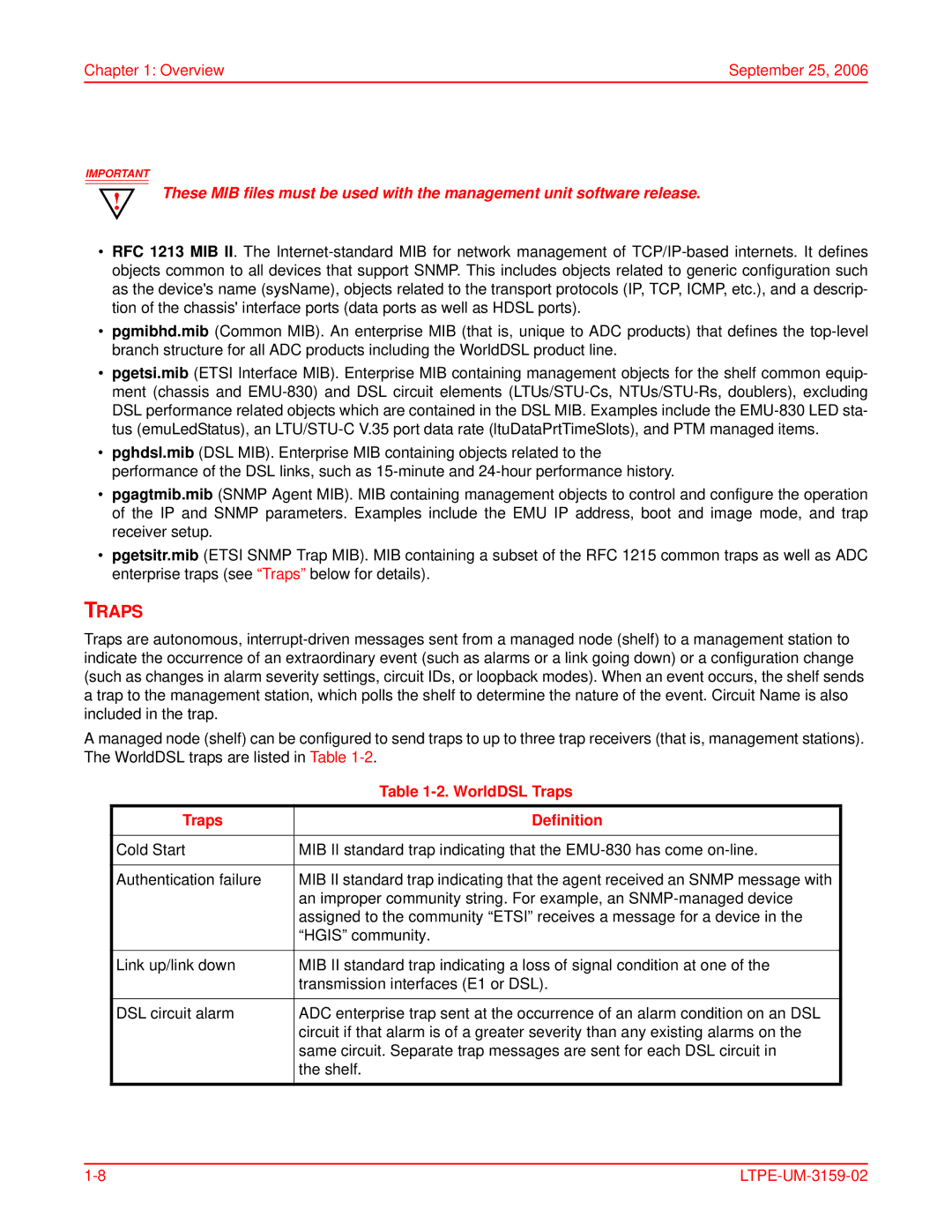
Chapter 1: Overview | September 25, 2006 |
IMPORTANT
These MIB files must be used with the management unit software release.
•RFC 1213 MIB II. The
•pgmibhd.mib (Common MIB). An enterprise MIB (that is, unique to ADC products) that defines the
•pgetsi.mib (ETSI Interface MIB). Enterprise MIB containing management objects for the shelf common equip- ment (chassis and
•pghdsl.mib (DSL MIB). Enterprise MIB containing objects related to the performance of the DSL links, such as
•pgagtmib.mib (SNMP Agent MIB). MIB containing management objects to control and configure the operation of the IP and SNMP parameters. Examples include the EMU IP address, boot and image mode, and trap receiver setup.
•pgetsitr.mib (ETSI SNMP Trap MIB). MIB containing a subset of the RFC 1215 common traps as well as ADC enterprise traps (see “Traps” below for details).
TRAPS
Traps are autonomous,
A managed node (shelf) can be configured to send traps to up to three trap receivers (that is, management stations). The WorldDSL traps are listed in Table
| Table |
Traps | Definition |
|
|
Cold Start | MIB II standard trap indicating that the |
|
|
Authentication failure | MIB II standard trap indicating that the agent received an SNMP message with |
| an improper community string. For example, an |
| assigned to the community “ETSI” receives a message for a device in the |
| “HGIS” community. |
|
|
Link up/link down | MIB II standard trap indicating a loss of signal condition at one of the |
| transmission interfaces (E1 or DSL). |
|
|
DSL circuit alarm | ADC enterprise trap sent at the occurrence of an alarm condition on an DSL |
| circuit if that alarm is of a greater severity than any existing alarms on the |
| same circuit. Separate trap messages are sent for each DSL circuit in |
| the shelf. |
|
|
